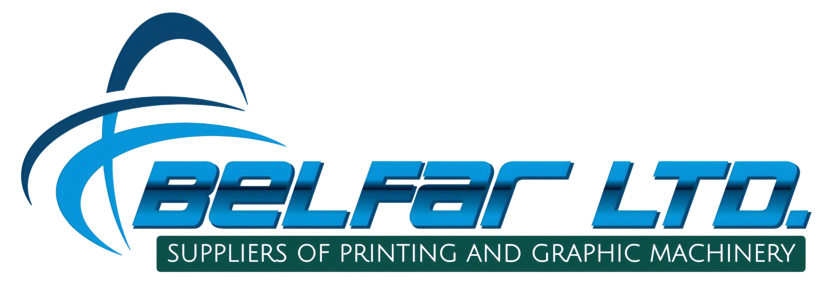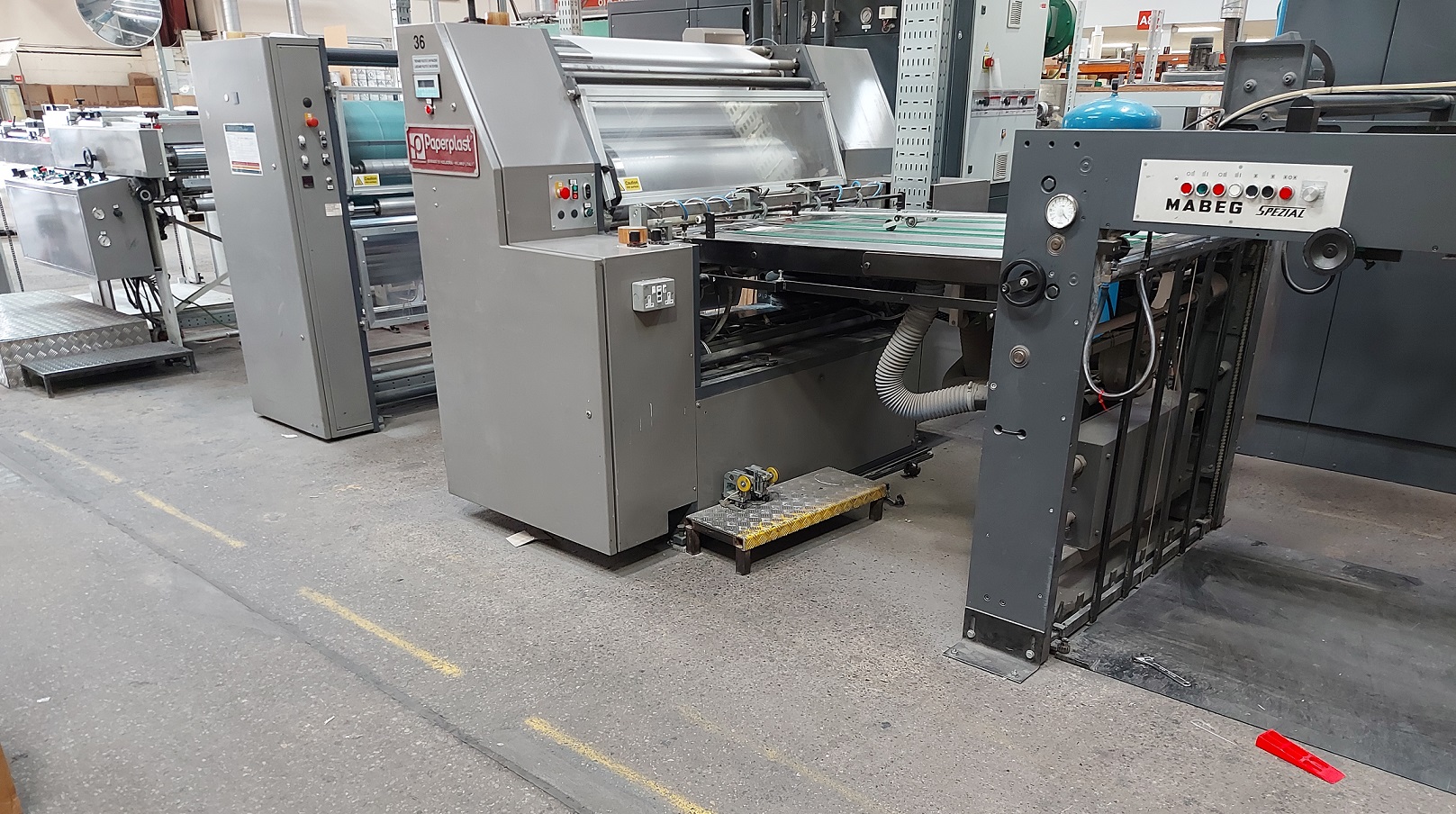The Strategic Financial Case for Used Machinery
For any printing business, the acquisition of a press is a significant capital investment. While the allure of brand-new equipment is strong, a strategic investment in high-quality used printing machinery often presents a more compelling business case. The most immediate advantage is the substantially lower initial outlay, which can be a fraction of the cost of a new machine. This cost-effectiveness is particularly beneficial for high-volume commercial printing, where used web offset printing machines provide a proven path to profitability. By reducing the upfront capital expenditure, businesses can achieve a faster return on investment (ROI) and strategically allocate funds to other critical areas such as marketing, staffing, or facility upgrades.
However, a savvy investor looks beyond the initial purchase price. The true financial picture is revealed by calculating the Total Cost of Ownership (TCO), a framework that encompasses all expenses over the machine’s operational life. TCO includes not only the acquisition cost but also the costs of shipping, installation, ongoing maintenance, potential repairs, and consumables. When considering the vast price range for used equipment—from a few thousand dollars for smaller units to well over $150,000 for complex, multi-colour presses—it becomes clear that the cheapest option is not always the most economical. A slightly more expensive, well-maintained machine from a reputable dealer with a transparent history often carries a lower TCO, thanks to greater reliability and reduced downtime. The key is to approach the purchase not as a simple transaction, but as a long-term strategic investment in your company’s production capacity.
The Pre-Purchase Inspection: Your Blueprint for a Smart Investment
A thorough physical and documentary inspection is the single most crucial step in mitigating the risks of purchasing used equipment. What you discover during this phase can save you from costly future repairs and production losses. For a purchase of this magnitude, an expert-level inspection is non-negotiable.
Mechanical and Operational Checks
Whenever possible, the machine should be seen in operation. A live demonstration provides invaluable information about its performance under load. Pay close attention to noise levels, the smoothness of its operation, and any signs of vibration or hesitation. If a live test is not feasible, requesting recent, high-quality print samples is the next best thing. These samples can reveal critical issues with print quality, such as streaks, inconsistent colour, or registration problems, which may point to underlying mechanical wear. Common operational faults like clogged printheads or frequent paper jams, while sometimes minor, can also be symptoms of more significant issues with rollers, belts, or other moving parts that require investigation.
Documentation Review: The Machine’s Biography
The machine’s maintenance records are its biography, telling the story of how it has been cared for throughout its life. A complete and consistent maintenance log is one of the strongest indicators of a reliable machine. This documentation should detail all routine servicing, repairs, and part replacements. The absence of such records should be considered a significant red flag, as it suggests a history of neglect that could lead to premature failure. Furthermore, it is essential to verify that the manufacturer still supports the specific model. The availability of spare parts and technical support is critical for long-term serviceability; a machine without access to replacement parts is a liability waiting to happen.
Component-Specific Inspection Checklist
The complexity of a modern printing press means that a detailed, component-level inspection is required. While a professional technician should conduct the final assessment, buyers should be familiar with the key areas of concern. The following checklist provides a structured approach to evaluating the physical condition of a used printing press.
| Component/Area | What to Look For | Why It Matters |
| Cylinders (Impression, Blanket, Plate) | Scratches, pitting, corrosion, or uneven wear. Check for signs of previous repairs. | Damage to cylinders directly impacts print quality, causing imperfections and inconsistencies. Repairs are extremely expensive. |
| Rollers (Ink & Dampening) | Cracks, glazing (a hard, shiny surface), or swelling. Ensure they are pliable and free of embedded debris. | Worn rollers lead to poor ink distribution and water control, resulting in substandard printing and increased waste. |
| Gears and Drive Train | Excessive wear on gear teeth, metal shavings in the vicinity, or unusual noises during operation. | Worn gears can cause registration problems and, in severe cases, lead to catastrophic mechanical failure. |
| Clamps and Grippers | Stripped bolts, cracks in the clamp housing, or weak gripping force. Test with both wooden and aluminum screens if applicable. | Faulty clamps and grippers can cause media to slip during a print run, leading to misregistration and wasted materials. |
| Registration System | Check for smooth and precise movement (whether XY or Joystick). Ensure there is no “slop” or backlash in the controls. | An inaccurate or failing registration system makes multi-colour work impossible and is a sign of significant mechanical wear. |
| Structural Frame & Base | Cracks (especially near weld points), rust, or warping.
Ensure the machine sits level and stable. |
Structural integrity is paramount for safety and consistent operation. A compromised frame can affect alignment and performance. |
| Electronic Controls & PLC | Check for error codes on the display, unresponsive buttons, or flickering screens. | Failing electronics can be difficult and costly to diagnose and repair, potentially rendering the machine inoperable. |
| Safety Features | Confirm that all safety guards, emergency stop buttons, and | Missing or bypassed safety features are a major liability |
| Component/Area | What to Look For | Why It Matters |
| interlock switches are present and fully functional. | and can lead to serious operator injury. |
This level of detailed inspection requires deep mechanical and engineering knowledge—an expertise that most print shop owners, who are specialists in printing, may not possess. This knowledge gap creates a significant risk for the buyer. This is precisely where a partnership with an expert firm becomes invaluable. Belfar Ltd’s “advice” and “locating” services are designed to fill this gap, with their engineers acting as the buyer’s trusted representative to perform these rigorous inspections and ensure any sourced machine meets the highest operational standards.
Vetting the Seller: Why Your Partner Matters More Than the Press
The company you buy from is just as important as the machine you buy. A fantastic press from an unreliable seller is a high-risk proposition that can leave you without support when you need it most.
A seller’s reputation is built on time and trust. Look for established companies with a long and verifiable trading history. Competitors like BBR Graphics and Press-tige Sales, for example, highlight their 30 and 20 years of experience, respectively, as a cornerstone of their credibility. Belfar Ltd, with its team’s combined experience of over 30 years, fits this model of stability and expertise. A company’s history can be independently verified through public records, such as the UK’s Companies House, which provides incorporation dates and filing histories, offering a transparent view of a company’s longevity and regulatory compliance.
Beyond history, evaluate the level of service and support offered. A reputable seller’s commitment does not end with the sale. Inquire about warranties, guarantees, the availability of technical support, and access to a reliable supply of spare parts. A seller who is transparent about the machine’s condition and provides comprehensive documentation is demonstrating a commitment to a long-term partnership rather than a one-off transaction.
Conclusion: Partnering for Success
Investing in used printing machinery is a sound strategy for growth, but it requires careful diligence. The key takeaways are clear: understand the financial benefits beyond the sticker price by considering the total cost of ownership, conduct an uncompromisingly thorough inspection of the machine’s mechanical and documentary history, and partner with a reputable, experienced seller who can provide support long after the purchase. The complexity of the process underscores the need for an expert guide.
Before you invest in your next piece of printing machinery, invest in a conversation with an expert. Contact Belfar Ltd to see how our complete service model de-risks your purchase and ensures your success from day one.



